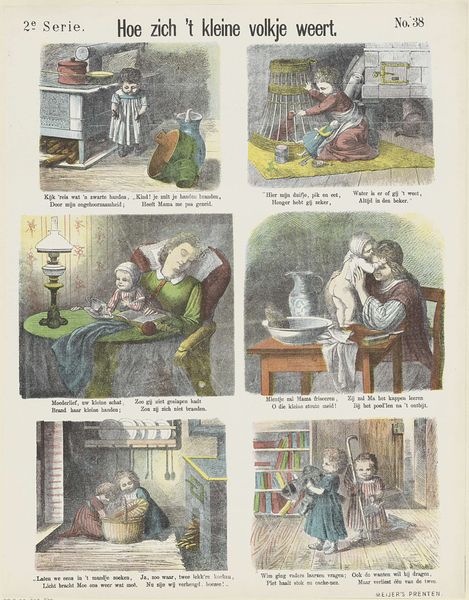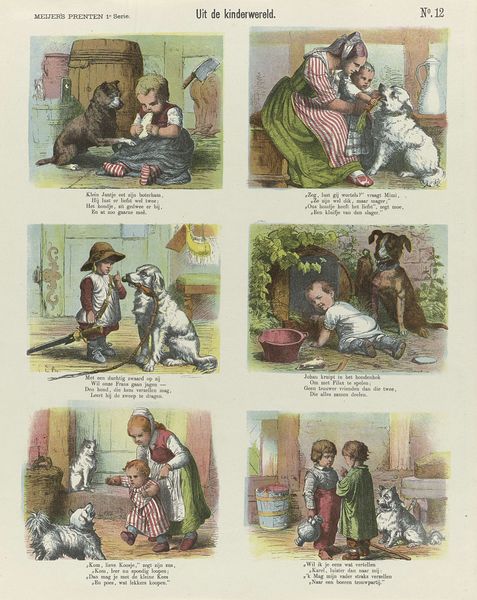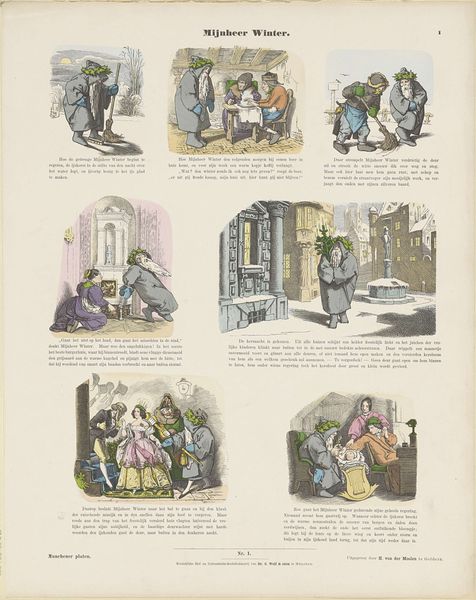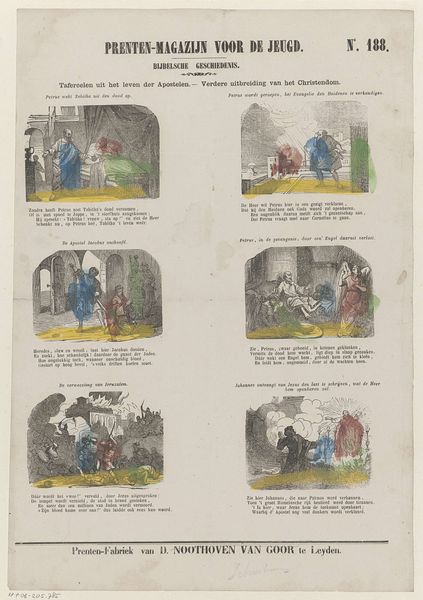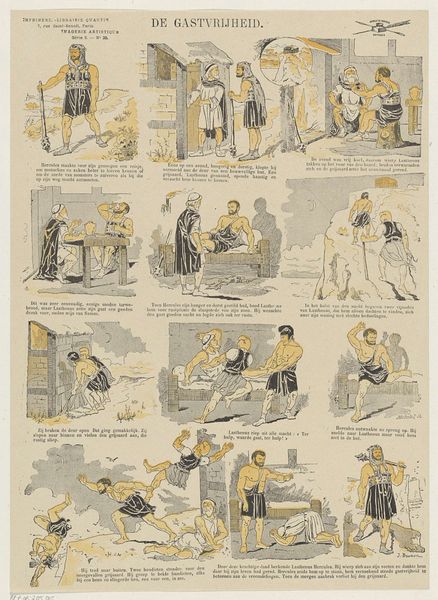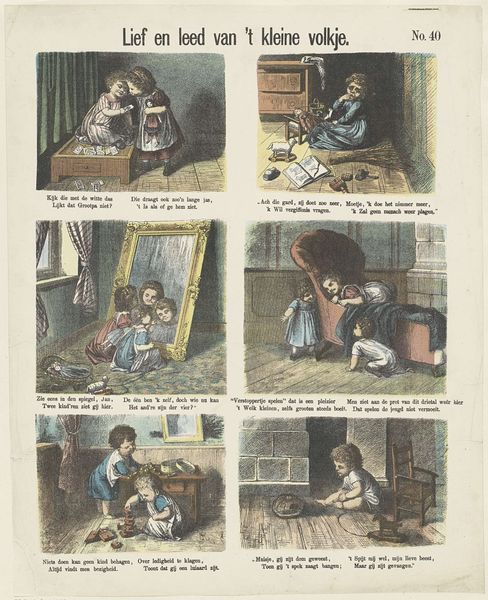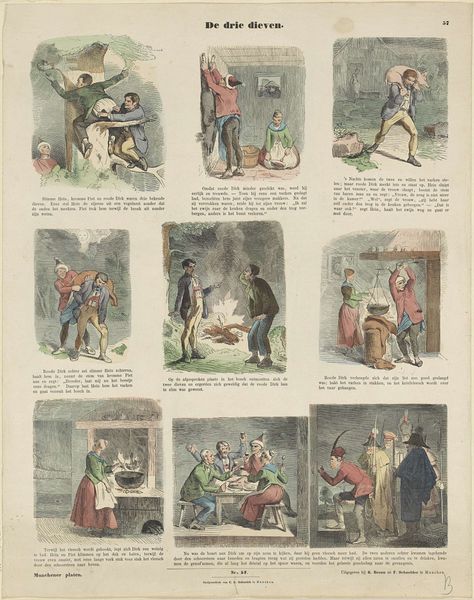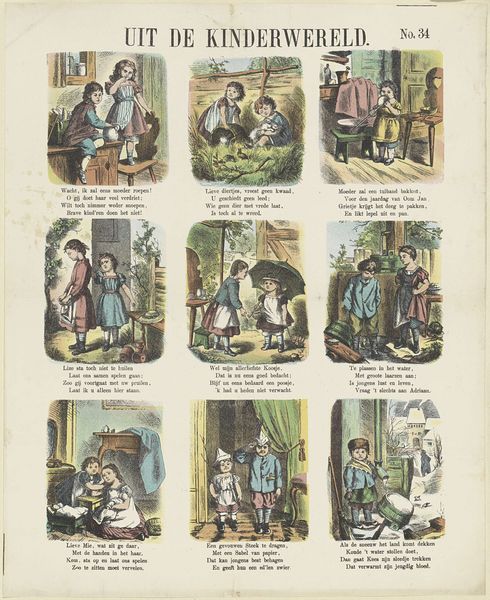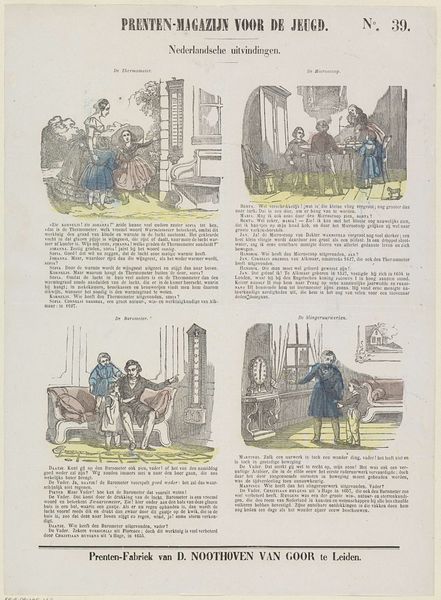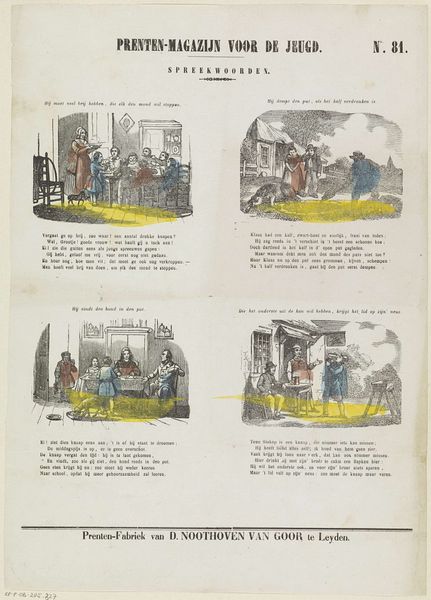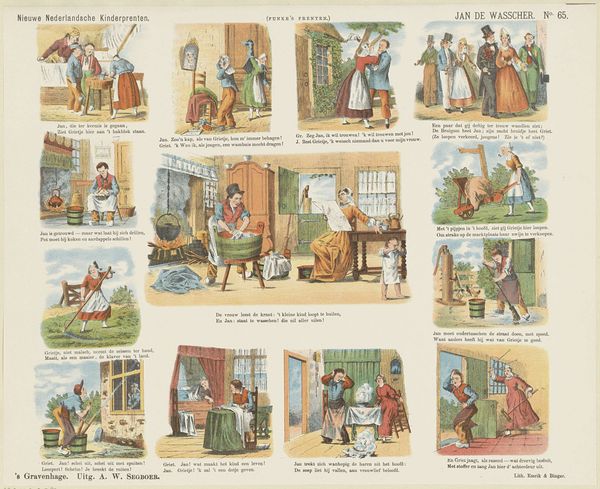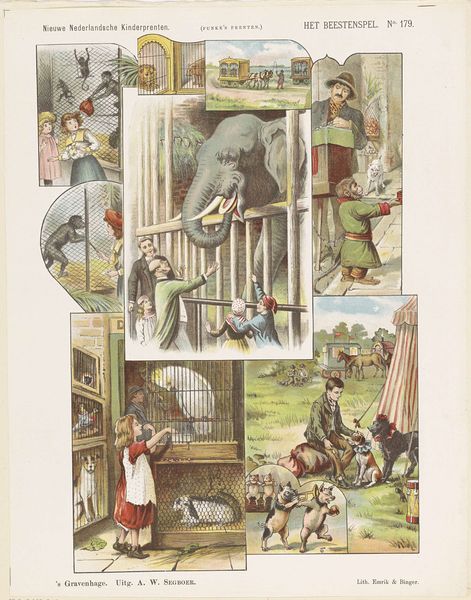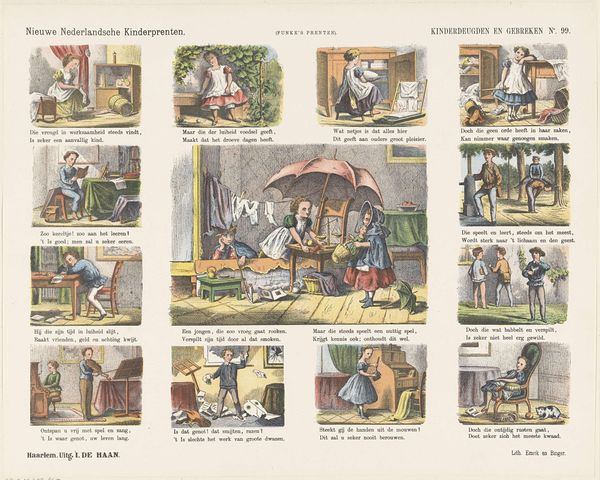
#
aged paper
#
page thumbnail
#
traditional media
#
personal sketchbook
#
journal
#
sketchbook drawing
#
watercolour illustration
#
sketchbook art
#
word imagery
#
watercolor
Dimensions: height 425 mm, width 338 mm
Copyright: Rijks Museum: Open Domain
Curator: Ah, yes, this delightful piece! It’s called "Het leven in het ouderlijk huis," or "Life in the Parental Home," created in 1874. We believe it to be a page from a personal sketchbook. The profile assigned to this piece is "De Ruyter & Meijer". Editor: Immediately, it strikes me as a carefully constructed yet warmly nostalgic scene. The colours are muted, almost aged, but that only adds to its intimate feel. I almost get the sense of walking into a comforting memory. Curator: Absolutely. You see, it presents these vignettes, little snapshots of domestic life. Look closely—each image captures different moments, from prayer to play, offering insights into the roles within a late 19th-century family. Editor: The work makes use of domestic bliss to present idealized childhoods that contrast with realities for many at the time. Were these "snapshots" truly accessible, or were they curated for certain class and race groups? This tension is very relevant to any reading of the imagery presented in this piece. Curator: I appreciate that lens. From an artist's perspective, I'm drawn to the intimate portrayal of family rituals. The lighting, the small gestures... they evoke a real sense of belonging. What I enjoy most is the ability to convey such warmth and detail with so few colours, in so few distinct settings, and without making the entire tableau feel overwhelming or messy. Editor: Well, let’s think more deeply about these so-called "rituals". I encourage listeners to consider whose home-lives were promoted in visual culture like this, and what the long-term implications have been for folks' own ideals about safety and comfort. This work speaks, therefore, to notions of an ever-elusive normal. Curator: An excellent and vital point. It adds a whole other layer to the viewing experience, doesn’t it? Makes one consider what lies beneath the surface, and why these visuals linger in our cultural imagination. Editor: Exactly. As we wrap up, what’s crucial to note is that visual material is just as important as archival sources when we look into questions of what has historically felt valued, worthy, and important. Curator: Thank you for sharing, as usual you made me reconsider everything I had pre-thought!
Comments
No comments
Be the first to comment and join the conversation on the ultimate creative platform.
